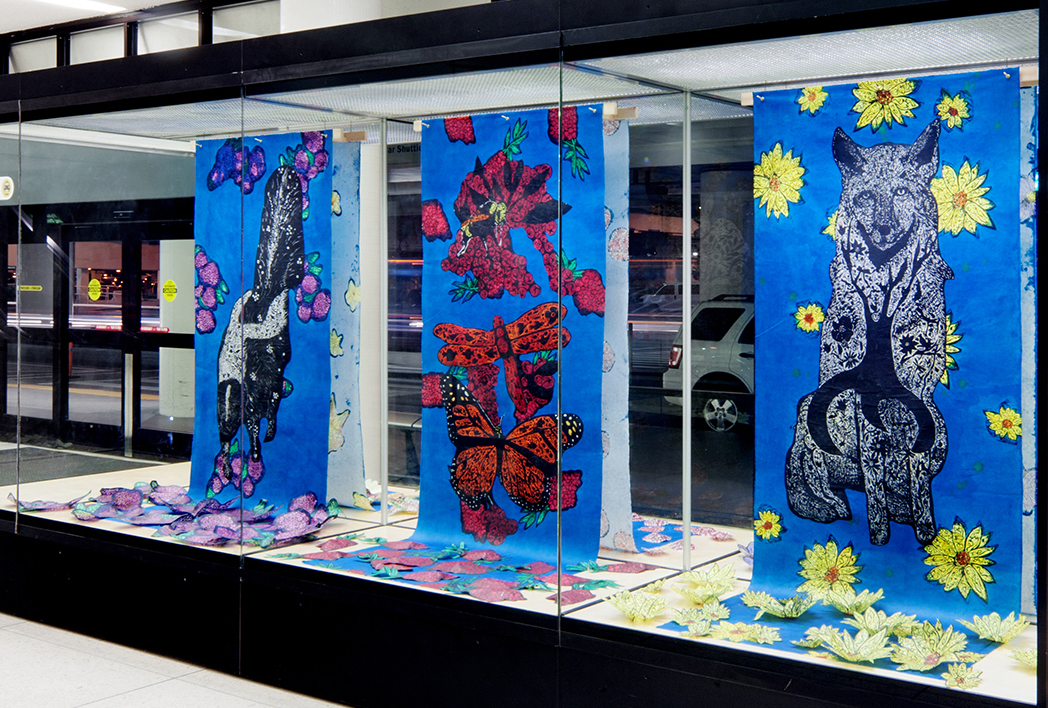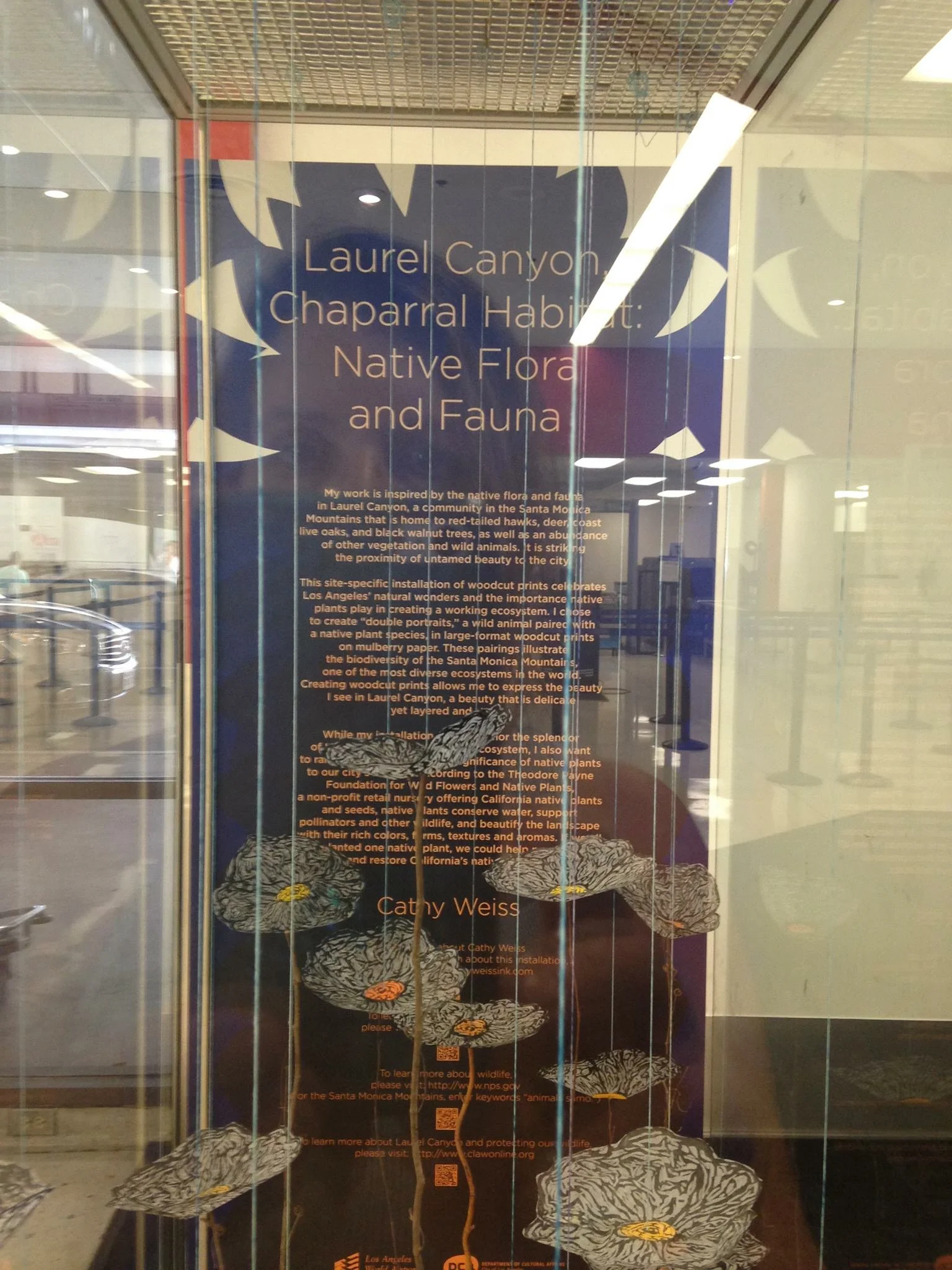


























Your Custom Text Here
Laurel Canyon, Chaparral Habitat: Native Flora and Fauna
Cathy Weiss
The animals, trees, and plants, represented in Cathy Weiss’ woodcut prints reflect the rich wildlife native to Laurel Canyon in the Hollywood Hills region of the Santa Monica Mountains.
The Santa Monica Mountains provide a haven for 450 animal species, including such rare species as the mountain lion and bobcat. Maintaining the area’s species richness is dependent upon a network of habitat linkages and wildlife corridors found within Significant Ecological Areas (SEAs) identified throughout Los Angeles County. SEAs keep the various regional habitats inter-connected and enable certain species to roam safely without encroaching into roads and backyards.
Laurel Canyon is also located on the Pacific Flyway, a major north-south route for migratory birds, along which hundreds of birds make an annual pilgrimage. As a result, the resident Southern California bird species often share company with migrants from Central and South America, Mexico, and the Caribbean, as well as other species, such as the Canada goose.
The neighborhood’s mild winters and dry, hot summers provide an environment suitable for drought-tolerant vegetation, such as the coast live oaks. Within Laurel Canyon’s landscape, the coast live oak is crucial to the ecosystem because of its resistance to fire. It’s also important because it provides acorns and shelter to an abundance of species. Other plants and trees found in Laurel Canyon include the matilija poppy, the largest poppy in the world, and Mexican elderberry and black sage trees, both of which attract birds and bees.
Laurel Canyon, Chaparral Habitat: Native Flora and Fauna
Cathy Weiss
The animals, trees, and plants, represented in Cathy Weiss’ woodcut prints reflect the rich wildlife native to Laurel Canyon in the Hollywood Hills region of the Santa Monica Mountains.
The Santa Monica Mountains provide a haven for 450 animal species, including such rare species as the mountain lion and bobcat. Maintaining the area’s species richness is dependent upon a network of habitat linkages and wildlife corridors found within Significant Ecological Areas (SEAs) identified throughout Los Angeles County. SEAs keep the various regional habitats inter-connected and enable certain species to roam safely without encroaching into roads and backyards.
Laurel Canyon is also located on the Pacific Flyway, a major north-south route for migratory birds, along which hundreds of birds make an annual pilgrimage. As a result, the resident Southern California bird species often share company with migrants from Central and South America, Mexico, and the Caribbean, as well as other species, such as the Canada goose.
The neighborhood’s mild winters and dry, hot summers provide an environment suitable for drought-tolerant vegetation, such as the coast live oaks. Within Laurel Canyon’s landscape, the coast live oak is crucial to the ecosystem because of its resistance to fire. It’s also important because it provides acorns and shelter to an abundance of species. Other plants and trees found in Laurel Canyon include the matilija poppy, the largest poppy in the world, and Mexican elderberry and black sage trees, both of which attract birds and bees.